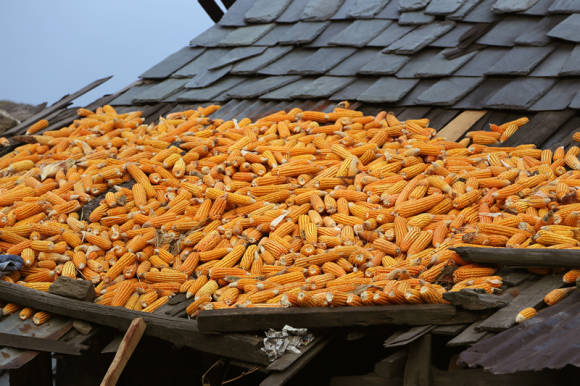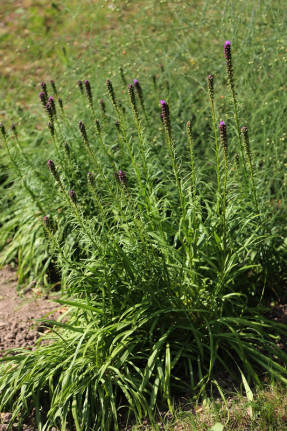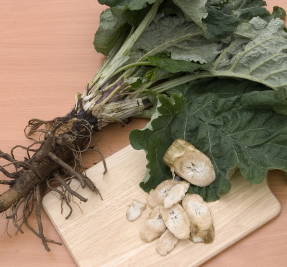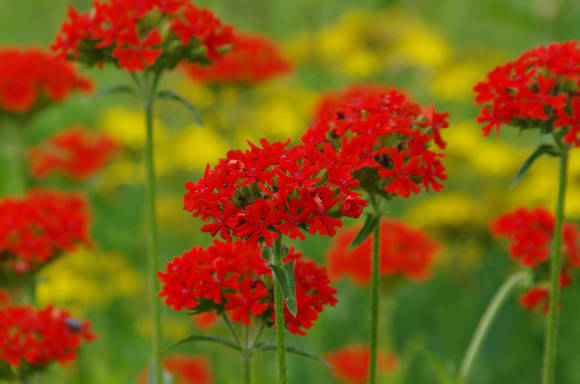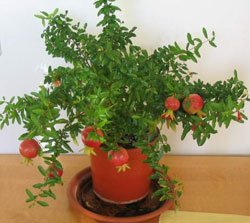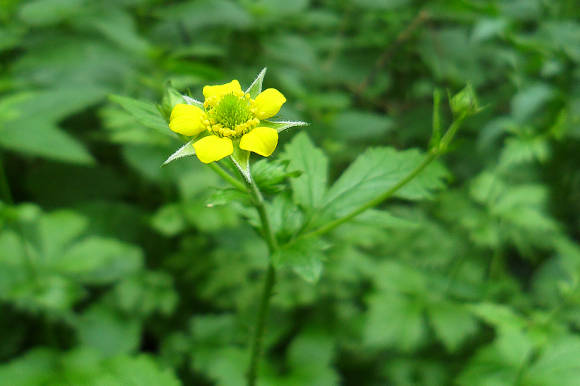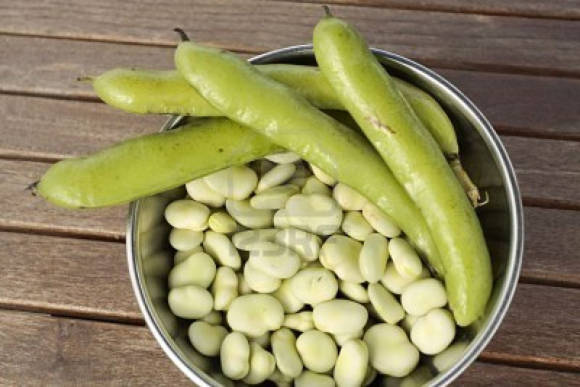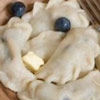Pepper is a very thermophilic crop, therefore, in Russia, north of the conditional Belgorod-Voronezh line, it can only be grown by seedlings. At home, it is most convenient to get seedlings on the windowsills.
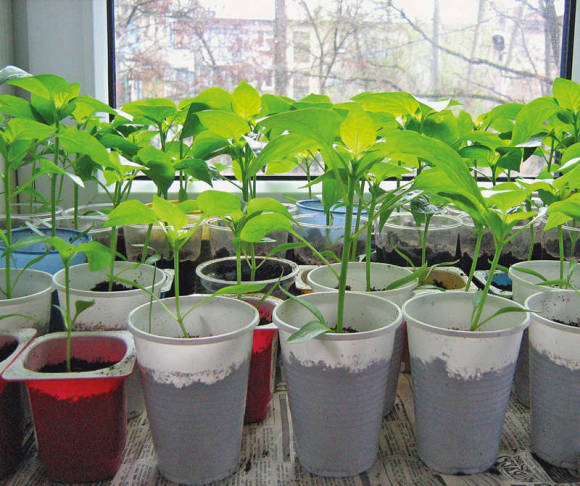
Preparing the soil
The soil for growing pepper seedlings should be loose, moisture-consuming, with a sufficient content of nutrients, a neutral reaction, and also free from pests and pathogens.
As a rule, the soil for seedlings is prepared from 2 parts of garden soil, 1 part of humus or rotted manure, wood ash (a large handful for 1 bucket of humus or manure), 1 part of peat and 1 part of sawdust (or coarse granular sand is added instead). It is best to take garden land where solanaceous crops have not been grown over the past 3-4 years: tomato, eggplant, pepper, physalis, potatoes.
In the absence of manure and wood ash, mineral fertilizers are used: from nitrogen - ammonium nitrate (contains 32–35% nitrogen), from phosphoric - simple (16–18% phosphoric acid) or double superphosphate, from potassium - potassium sulfate or potassium nitrate. It is inappropriate to use potassium chloride and potassium salt - they contain a lot of chlorine harmful to the roots. An excess of nitrogen is not dangerous for pepper, since its stem is relatively resistant to stretching.
 |  |
F1 Orange - fruits weighing 40 g, gourmet hybrid with increased carotene content for greenhouses and open ground | F1 Mammoth Tusks - mid-season hybrid, fruits are 20-27 cm in size, the hybrid is resistant to the virus tobacco mosaic |
Pepper is very sensitive to the level of acidity and salt content in the soil, the optimum acidity is pH 6–6.5. To reduce acidity, 15–17 g of dolomite flour or lime per 1 kg of soil should be added to the seedling soil. Also for the prepared seedling soil, hydrogels will be a good help - they are specially designed to mix with the soil, swelling when they absorb water. At the same time, the soil becomes looser and not compacted, and nutrients are washed out much more slowly. At the same time, the number of waterings can be significantly reduced - to once every 10–20 days. The seedling soil prepared in this way is poured into strong film bags and stored until sowing. When using an industrial substrate for seedlings purchased in a garden center, it is recommended to add 1.5 sand, 1-2 tablespoons of ash, 1-2 tablespoons of dolomite flour and 1 spoonful of complex fertilizers to 5 liters of soil (standard package size).
Seed preparation for sowing
To rid the plants of viral and fungal infections, the seeds are etched in a 2% solution of potassium permanganate at room temperature for 20 minutes, followed by rinsing them in cold water. Then they are soaked for 18 hours in a solution of zircon (1 drop per 300 ml of water) or epin (2 drops per 100 ml of water) at room temperature. To accelerate germination, you can also soak seeds in nutrient solutions of preparations ideal, gumi, potassium humate, agriculture-start, albite, etc., according to the attached instructions. After that, the seeds are wrapped in a damp cloth for 2 days and placed in a plastic bag so that they do not dry out. The optimum temperature for germination of pepper seeds is 22 ... 24 ° C. In central Russia, the optimal time for sowing pepper for seedlings is at the end of February - beginning of March.
 |  |
F1 Black Bull-NK - high yielding hybrid average ripening period, fruits weighing up to 400 g with a wall thickness of 7–8 mm | F1 Red Bull-NK - vigorous plant, growable as in any type of greenhouse, and in the open field |
Potted seedlings
The best way to grow pepper seedlings at home is to sow pre-germinated (hatched) seeds or seedlings 5–8 mm long in pots with soil. At a room temperature of 25 ... 27 ° C, friendly shoots appear on the 3-5th day.
At the beginning, it is advisable to use 4x5 cm pots for growing peppers - they occupy a small area on the windowsills, and, if necessary, it is more convenient to transfer them to the most illuminated place. When the plants grow up and begin to shade each other, they are transplanted into 10 or 12 cm pots - especially for seedlings of mid-ripening and late-ripening varieties that form large stems and leaves.
Potless seedlings
Pepper seedlings can be grown without pots by sowing (as well as picking seedlings) in a box or plastic container 12-15 cm high.
Sow in grooves 1–2 cm deep, the distance between them is 2–3 cm, and between plants 1–2 cm. Then the box is covered with foil or glass and placed in a warm place. The soil in the box is lightly sprayed with water every 2 days using a hand sprayer. When shoots appear, the box is transferred for 5–7 days to a bright, cool place with a temperature of 16 ... 18 ° C. (If the temperature is higher, the plants begin to stretch strongly and the growth of roots slows down.) Then the seedlings are grown at a temperature of 20 ... 25 ° С during the day and 16 ... 18 ° С at night.
 |  |
Belozerka - medium early high-yielding variety, fruits are large, with juicy pulp, weighing 100-120 g, wall thickness 5 mm | Taiga - early maturing, compact low-leafed variety, fruits weighing 60 g excellent taste with increased keeping quality |
In the phase of cotyledon leaves, when they fully unfold (2-3 weeks after germination), the plants are thinned, leaving the best shoots at a distance of 5 cm from each other, and after 2-3 weeks, thinning is carried out again, leaving 10-12 cm between the plants, row spacing - 10-12 cm. To obtain a large number of sweet pepper seedlings, the seedlings are sown in seed boxes measuring 30x50 or 40x60 cm, spending 1-2 bags of seeds for each.
Seedling care
The first 2-3 days after the emergence of seedlings should not be watered - if the soil is dry, it is moistened with a sprayer. When the cotyledon leaves unfold, water the seedlings with warm (30 ° C) water. It should not be allowed to wilt, but excess water is no less dangerous - in this case, the plants can get sick with a black leg. If this happens, then watering is immediately stopped, and the soil is sprinkled with a layer of calcined sand or powdered with ash. In this case, good ventilation of the plants is very important, however, keep in mind that pepper seedlings do not tolerate cold air from the window.
 |
F1 Bon Appetite Orange – medium early, productive hybrid, tall plant, powerful, cuboid fruit and prismatic measuring 10x8 cm |
If the seedlings are weak, it is useful to treat them 2-3 times with an epin solution with an interval of 8-10 days. After that, the plants react less to unfavorable growing conditions, especially the lack of illumination inherent in city apartments.
During the period of insufficient sunlight, additional illumination of the seedlings is carried out, otherwise the laying of the first buds may not occur. It is advisable to use fluorescent lamps - ordinary incandescent lamps heat up and dry the air very much. On windowsills, plants can also suffer from overheating caused by steam heating batteries. And to prevent this from happening, they install shields made of foil, cardboard or plywood.
For good root formation, the plants can be fed with potassium humate (25 ml per 10 l of water). Until the formation of the 5th-6th true leaf (beginning of flower buds), the seedlings grow slowly. And before budding (6–8 true leaves) and during the flowering period, its rapid growth is observed. At this time, it is advisable to irrigate with a solution of trace elements: for 10 liters of water - 1.7 g of boric acid, 1.0 g of sulphate or citrate iron, 0.2 g of copper sulphate, 0.2 g of zinc sulphate, 1 g of manganese sulphate.
Seedling hardening
When the seedling has 7-8 true leaves, large buds and reaches a height of 20-25 cm, they begin to harden it - for 7-10 days it is placed in conditions with a low temperature: at first - 16 ... 18 ° С, then - 12 ... 14 ° C.For this, houses open the vents, windows, and then take out the plants to the balcony, veranda, exposing them to direct sunlight. 2-3 days before planting in open ground, the seedlings are left there overnight, however, avoiding exposure to too cold air. By the time of planting, the sweet pepper seedlings should be stocky, healthy, seasoned, with 8-9 or more true leaves and well-formed buds.
